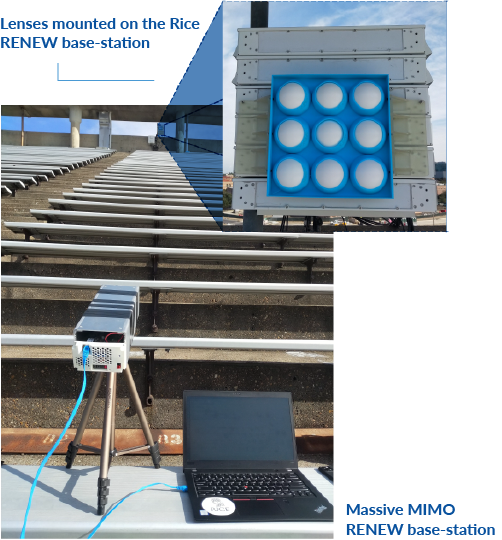Researchers at Rice have developed a new method to increase wireless capacity with a simple lens addition to current 5G systems.
Dubbed LensFD, the method enables cost-effective full-duplex operation and can be layered on top of existing 5G deployments. It holds the potential to improve network capacity in both current and future 5G/6G wireless networks.
The paper, titled " LensFD: Using Lenses for Improved Sub-6 GHz Massive MIMO Full-Duplex," is authored by Zhican "West" Chen, Nicolas Barati, Jon Veihl, Clayton Shepard and Ashutosh Sabharwal.

“The original idea is from our collaborators at CommScope who had partnered with Rice spinoff Skylark Wireless to test whether their lens for sub-6 GHz MIMO systems could improve base-station to mobile handset link capacity. When we saw the lens performance data, we immediately saw the potential to use the lenses for full-duplex operation, and from there the rest of the idea took hold,” said Sabharwal, department chair and Ernest Dell Butcher Professor of Electrical and Computer Engineering.
In 2010, Sabharwal and his group demonstrated that contrary to common knowledge, radios can simultaneously transmit and receive data by using a novel method to cancel self-interference, thus enabling full-duplex operation. Self-interference is essentially listening to your own voice while talking, which for radios means drowning the useful signal of anyone else around you.
Utilizing a cost-effective lens array and transmission precoding, LensFD offers an innovative way to reshape the beam pattern of antennas in massive MIMO arrays to reduce self-interference.
Through comprehensive testing of three distinct lens configurations, an increase of 1.6 times was recorded compared to conventionally utilized TDD networks, resulting in improved system capacity.
“The idea of using lenses on MIMO full-duplex communication is similar to cupping your hands over your mouth while talking to focus your voice in a specific direction. This way, you can efficiently make your voice louder and hear other people more clearly,” said fifth-year ECE graduate student Chen.
The developers of LensFD plan to make their dataset open-sourced, including a 101GB library of data compiled from a commercial-grade system. The findings could be helpful to engineers and researchers for future development in wireless communication.
Innovation accelerates when we can share our data and code. This ensures both reproducibility and further improvements by others. Both are crucial to move ideas forward, Sabharwal said.
As the demand for mobile data increases dramatically and rapidly, operators have begun to use mmWave frequencies to create additional system capacity to move towards 5G Advanced and 6G. The authors of the study hope to demonstrate the value of LensFD for both mmWave and sub-THz spectral bands.
RENEW project - renew-wireless.org
Rice Wireless - wireless.rice.edu

